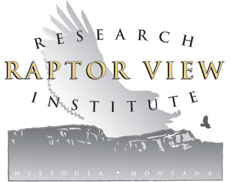Power line electrocutions are one of the major human-caused mortality factors to medium and large sized raptors throughout North America. Depending on the particular power line configuration, location of the line and time in operation, a single pole can be responsible for the mortalities of dozens if not hundreds of individual raptors. Most electrocutions and injuries are the result of the raptor landing between phases on the cross arm. When they close the circuit, via phase to phase, phase to ground, or otherwise, the birds become energized and often die on the spot. Electrocution is huge problem in many areas of the West, especially across prairie lands and agricultural fields where where utility poles are some of the only perches available for hunting and perching raptors.
Electrocutions and related injuries to raptors are very preventable. Many utility companies now adhere to standards put forth by the Avian Power Line Interaction Committee (APLIC) for newly constructed lines (see aplic.org for more information). However, there are thousands of miles of older, poorly configured lines, many erected in the 1960s and 1970’s that need attention and continue to kill raptors. Once more, Montana is undergoing a big push for renewable energies, as well as, expanding oil and gas extraction to meet the nations rising energy needs. This hazard persists and RVRI is doing all we can to lessen this on-going problem.
RVRI is currently working with state and federal biologists and investigators to reach out to all utility companies in Montana to aid them in identifying mitigating poorly configured utility poles. Making sure newly built utility lines and poles are properly configured and equipped with the latest in Avian Power Line Interaction Committee (APLIC) raptor safe configurations . This high source of large raptor morality is very preventable.
Through the newly formed Golden Eagle Working Group, RVRI is collaborating with FWP, BLM, FWS, MT Audubon and others to work with utility companies both large and small, to see that Montana’s power lines (old and new) are raptor safe. This collaborative effort in conservation and raptor protection is exemplary of how science, conservation, industry and others can and must work together to protect these ecologically vital, federally protected species.











